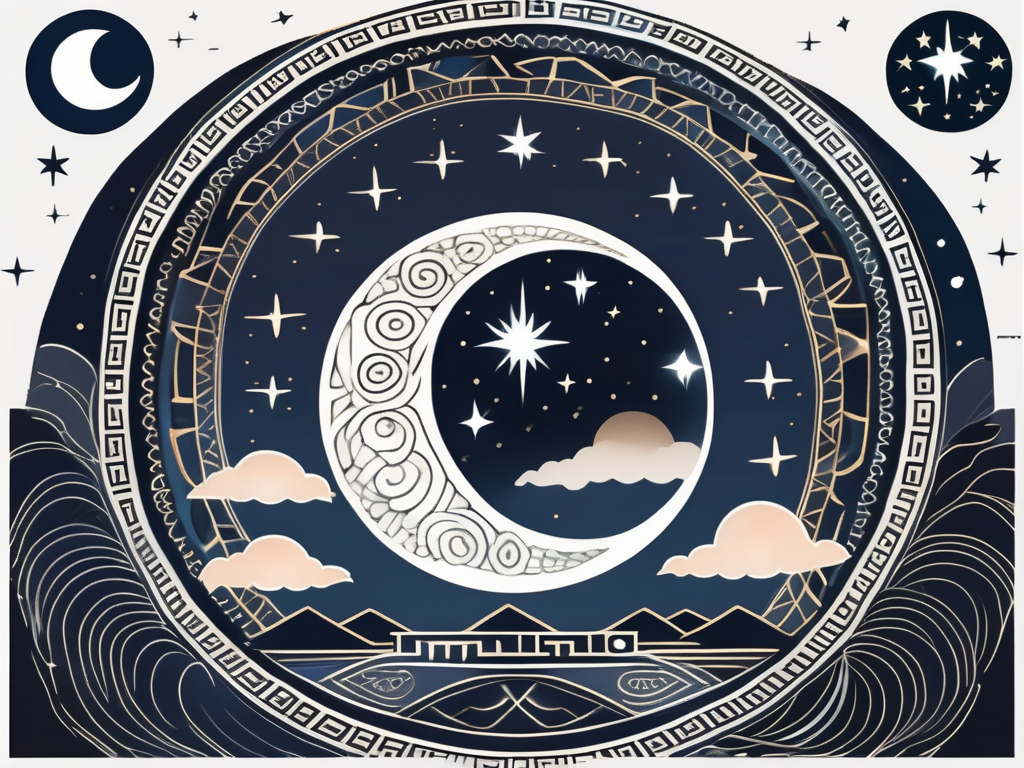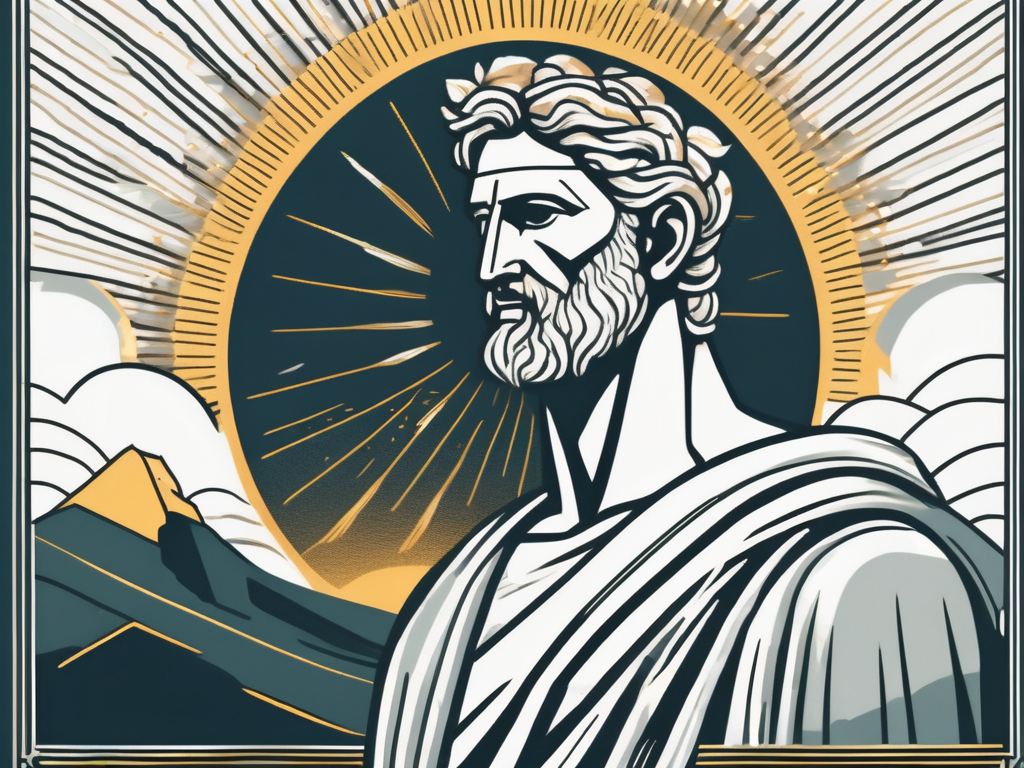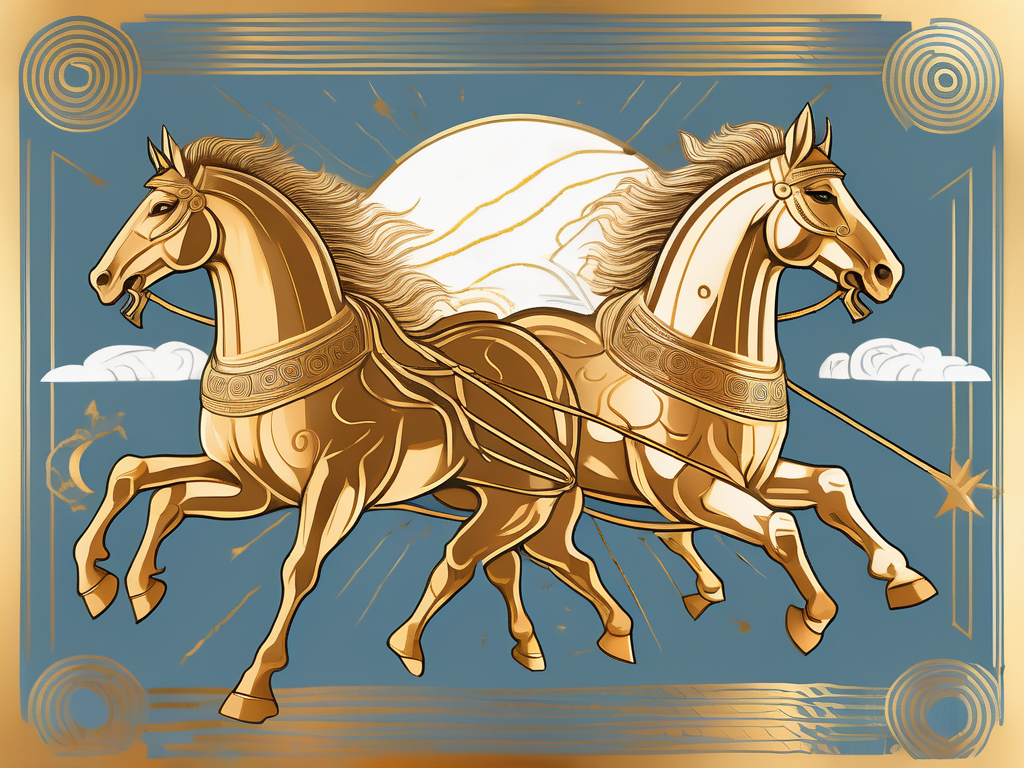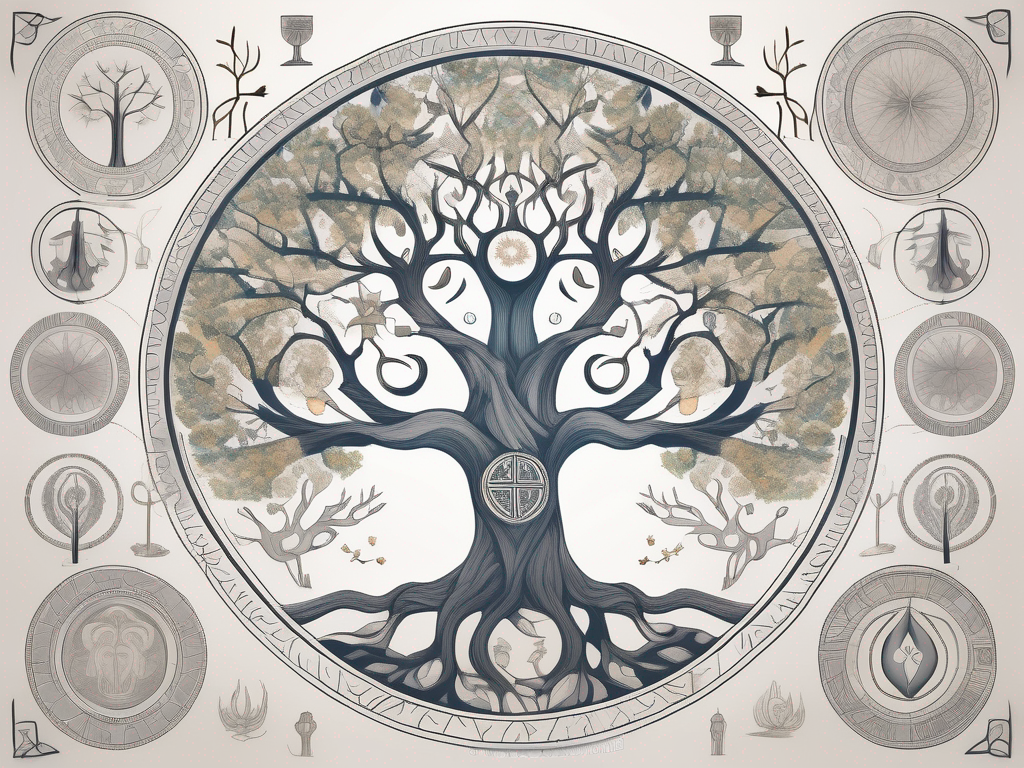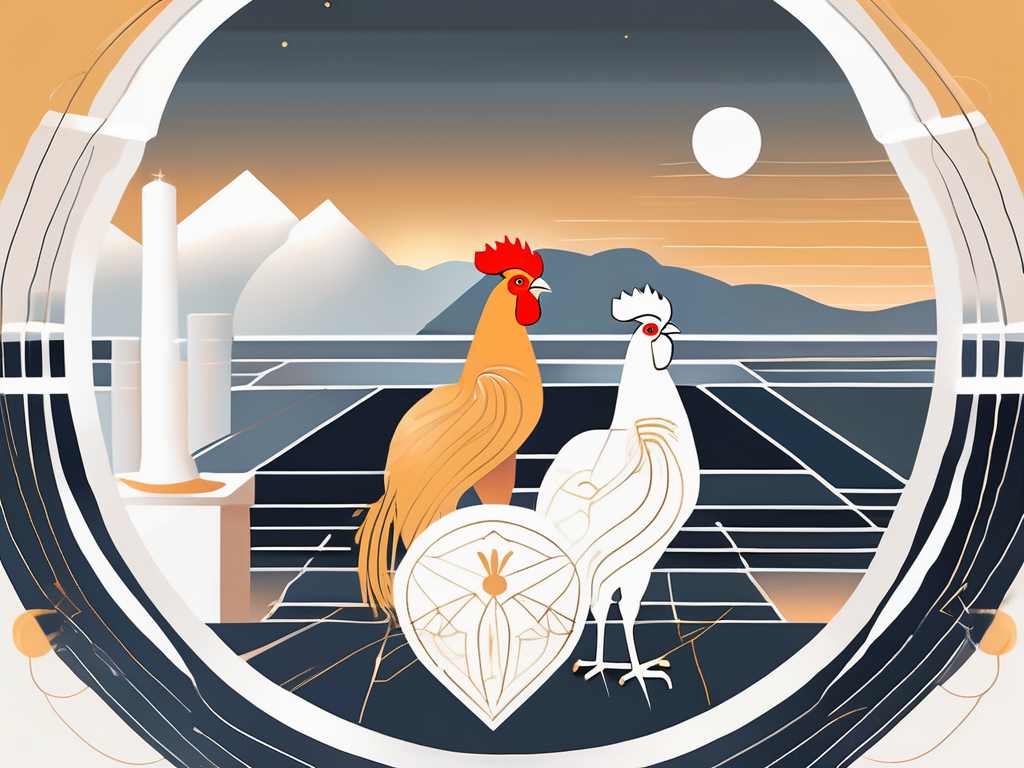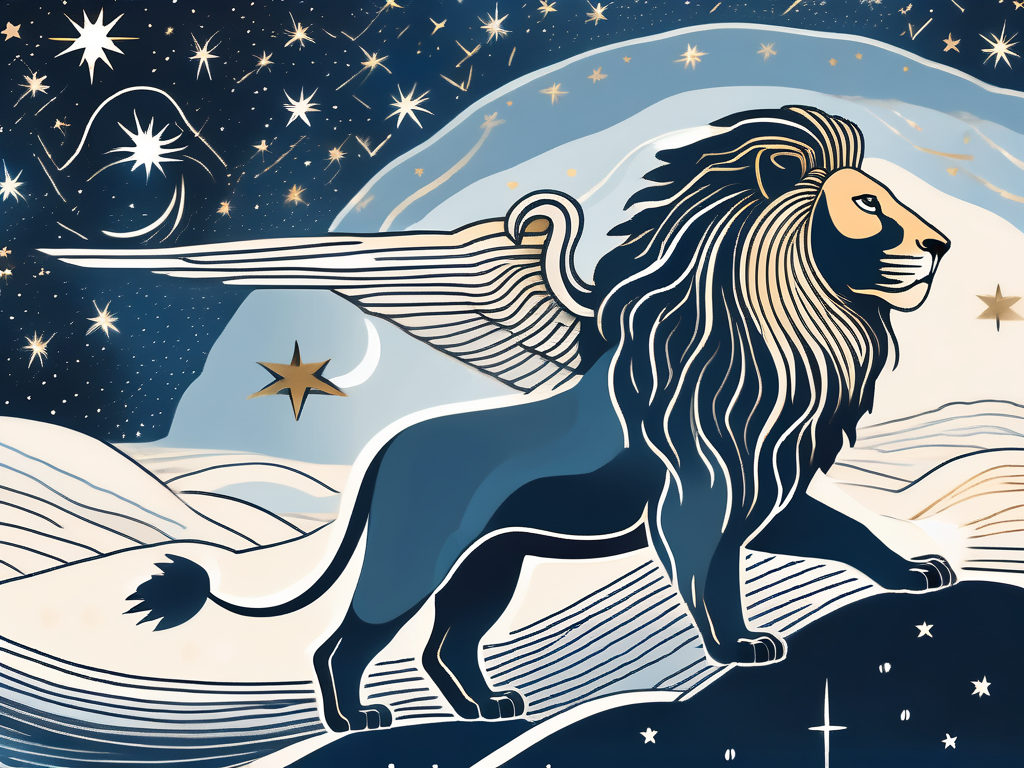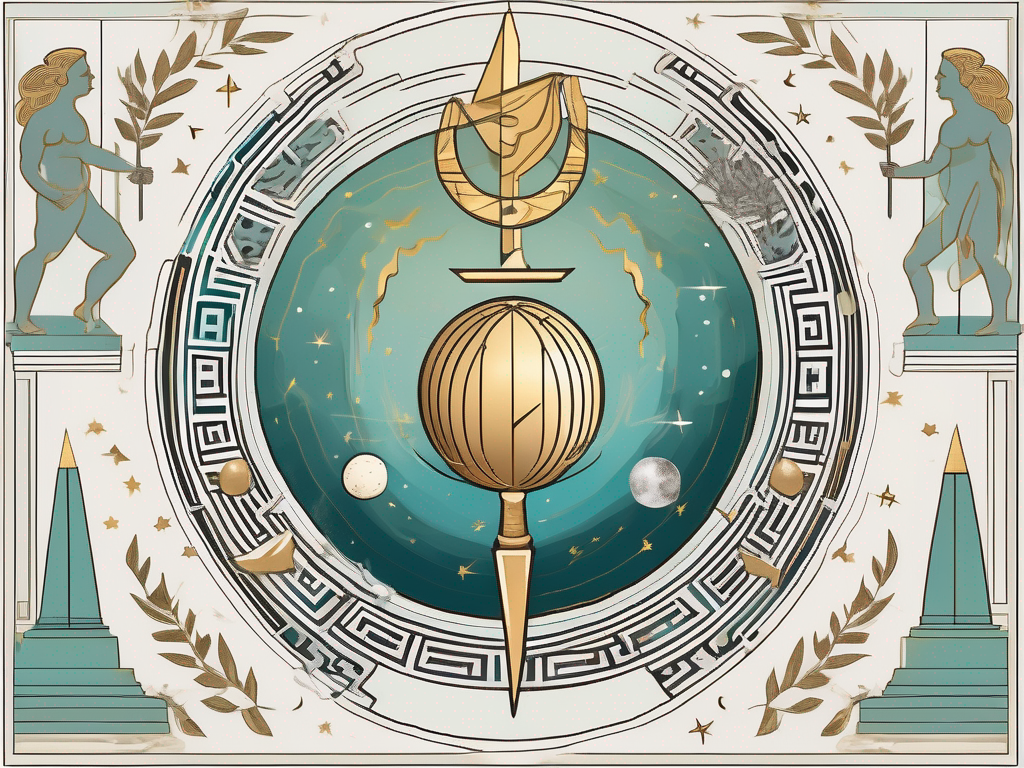In Greek mythology, there are numerous gods and goddesses who played significant roles in shaping the beliefs and culture of the ancient Greeks. One such goddess is Selene, the goddess of the moon. Let’s delve into her captivating story and explore the various aspects of her role in Greek mythology.
Understanding Selene’s Role in Greek Mythology
Selene’s Family and Origins:
Selene was born to the titan gods Hyperion and Theia, making her a second-generation deity. She was one of the twelve Titans, who ruled over the world before the Olympians ascended to power. Being the sister of Helios, the god of the sun, and Eos, the goddess of the dawn, Selene was part of a divine family associated with celestial bodies and natural phenomena.
Selene’s Powers and Symbols:
As the goddess of the moon, Selene possessed extraordinary powers. She had the ability to control the lunar cycle, its phases, and its influence over tides. Selene was often depicted driving her moon chariot across the night sky, illuminating the world below with her radiant light. Her symbols included a crescent moon, which became associated with her divine presence.
It is said that Selene’s connection to the moon was so strong that she could communicate with it, receiving messages and guidance from the celestial body. This ability allowed her to understand the secrets of the universe and the mysteries of the night. Selene’s wisdom was sought after by mortals and gods alike, as she held the knowledge of the cosmos within her divine being.
Legend has it that Selene’s chariot was pulled by a pair of magnificent silver-winged horses, named Phaethon and Lampetia. These majestic creatures were said to possess the strength of a thousand stallions, allowing Selene to traverse the night sky with ease. The sight of Selene riding her chariot was a breathtaking spectacle, as she left a trail of moonlight in her wake, casting an ethereal glow upon the world below.
As the goddess of the moon, Selene held great influence over the tides of the oceans. It was believed that her presence in the night sky dictated the ebb and flow of the seas, guiding sailors and fishermen in their journeys. Selene’s power over the tides was both awe-inspiring and terrifying, as she could unleash her wrath upon those who dared to defy her authority.
Throughout Greek mythology, Selene was often associated with romance and love. It was believed that her moonlight had the power to inspire passion and desire in the hearts of mortals. Lovers would often seek the moon’s blessing, hoping that Selene’s divine influence would bring them closer together. In some tales, Selene herself fell in love with mortals, leading to tragic and forbidden romances that captivated the imaginations of storytellers for centuries.
As the sister of Helios and Eos, Selene played a crucial role in the cycle of day and night. While Helios brought forth the sun to illuminate the world during the day, Selene took over the night shift, casting her gentle light upon the earth. Together, they ensured the balance between light and darkness, creating a harmonious rhythm that governed the passage of time.
It is said that Selene’s beauty was unmatched, with her radiant glow captivating all who beheld her. Artists and poets often depicted her as a stunning goddess, with silver hair cascading down her back and a serene expression on her face. Selene’s beauty was not only physical but also reflected in her gentle and nurturing nature, as she provided comfort and solace to those who sought refuge in the night.
The Worship and Cult of Selene
Temples and Sacred Sites:
Throughout ancient Greece, various temples and sacred sites were dedicated to Selene. These places served as centers of worship and offered a place for devotees to pay their respects and seek her blessings. One of the most well-known temples dedicated to Selene was the Artemis-Selene Temple in Ephesus.
The Artemis-Selene Temple in Ephesus was a magnificent structure that stood as a testament to the devotion of Selene’s worshippers. Its grand columns and intricate carvings depicted scenes from Selene’s mythological stories, captivating the imagination of all who visited. Inside the temple, there was a sacred altar where offerings were made to honor the goddess. The atmosphere was filled with the soft glow of candlelight, creating a serene ambiance that inspired reverence and awe.
Rituals and Festivals:
The worship of Selene involved various rituals and festivals conducted throughout the year. These celebrations allowed worshippers to show their devotion and honor the goddess. One notable festival was the Hermaia, a three-day event where offerings and sacrifices were made in Selene’s name.
The Hermaia festival was a time of great joy and reverence. The city streets were adorned with colorful banners and flowers, creating a festive atmosphere. Devotees would gather at the temple, dressed in their finest garments, to participate in the rituals. The air was filled with the enchanting melodies of musicians playing ancient instruments, adding to the mystical ambiance.
During the Hermaia festival, worshippers would present offerings of fruits, flowers, and incense to Selene. These offerings symbolized their gratitude for her guidance and protection. The temple priests would lead the ceremonies, reciting prayers and performing sacred rituals to invoke Selene’s presence. The devotees would join in chanting hymns, their voices blending harmoniously as they expressed their devotion.
As night fell, the temple would be illuminated by hundreds of candles, casting a soft, ethereal glow. The worshippers would gather outside, looking up at the night sky, where Selene’s radiant moon shone brightly. It was believed that during the Hermaia festival, Selene’s presence was particularly strong, and her blessings were bestowed upon those who showed unwavering faith.
The Hermaia festival concluded with a grand feast, where the community came together to share food and stories. It was a time of celebration and camaraderie, as worshippers reflected on the significance of Selene’s influence in their lives.
Selene’s Influence on Greek Literature and Art
Depictions of Selene in Ancient Art:
Selene’s captivating beauty and ethereal nature made her a popular subject in ancient Greek art. Artists often portrayed her as a radiant goddess in flowing robes, with a crescent moon adorning her head. These artworks celebrated her role as the goddess of the moon and showcased her allure and power.
One particular artwork that stands out is a marble relief sculpture found in the ruins of an ancient Greek temple. The sculpture depicts Selene in a graceful pose, her long hair cascading down her back as she gazes up at the night sky. The intricate details of the sculpture, from the delicate folds of her robes to the serene expression on her face, demonstrate the skill and craftsmanship of the artist.
Another notable representation of Selene can be found in a mosaic discovered in a wealthy aristocrat’s villa. The mosaic, composed of tiny colored stones, depicts Selene riding her silver chariot across the night sky, surrounded by stars and celestial beings. The mosaic’s vibrant colors and intricate design capture the ethereal beauty and celestial power associated with Selene.
References to Selene in Greek Literature:
In Greek literature, Selene often appears in various myths and stories. She is frequently mentioned in romantic tales and is known for her passionate encounters with mortal men. Her character evokes a sense of mystique and fascination, making her a compelling figure in Greek literature.
One such myth recounts the story of Selene’s forbidden love affair with the handsome shepherd, Endymion. According to the myth, Selene was so enamored by Endymion’s beauty that she asked Zeus to grant him eternal youth and immortality. Every night, Selene would descend from the heavens to visit Endymion as he slept, their love transcending the boundaries of mortality and immortality.
Another famous literary reference to Selene can be found in the epic poem “The Odyssey” by Homer. In the poem, Selene is mentioned as the sister of Helios, the sun god, and Eos, the goddess of the dawn. Her role as the goddess of the moon is highlighted when she aids Odysseus on his journey by illuminating the night sky, guiding him through treacherous waters.
Selene’s influence on Greek literature extends beyond romantic tales and epic poems. She is also associated with the concept of time and the cycles of nature. In the tragedy “Medea” by Euripides, Selene is invoked by the protagonist as a witness to her suffering and as a symbol of the passage of time. This use of Selene as a metaphor adds depth and complexity to the play, exploring themes of fate and the inevitability of change.
Selene’s Relationships and Love Stories
Selene and Endymion: A Love Story:
One of the most famous love stories involving Selene is her romantic relationship with Endymion, a shepherd. According to the myth, Selene fell deeply in love with Endymion and asked Zeus to grant him eternal youth and eternal sleep, so she could visit him every night. This timeless tale symbolizes the eternal connection between the moon and the earth.
Selene’s Other Romantic Entanglements:
Aside from Endymion, Selene had numerous other romantic relationships. She is said to have had affairs with various gods and mortal men, which further highlights her allure and passionate nature. These stories added an element of drama and complexity to Selene’s character in Greek mythology.
Comparing Selene to Other Moon Deities
Selene and Artemis: A Comparison:
While Selene and Artemis are both goddesses associated with the moon, they have distinct roles and characteristics. Selene represents the moon’s serene and romantic qualities, symbolizing its beauty and luminescence. On the other hand, Artemis embodies the wild and untamed aspects of the moon, representing its hunting and nocturnal nature.
Selene in Comparison to Roman Goddess Luna:
In Roman mythology, Luna is the equivalent goddess to Selene. Luna’s character shares similarities with Selene, as both goddesses personify the moon and its various attributes. However, their worshippers had different cultural interpretations and practices, showcasing the diverse mythologies that emerged across different civilizations.
In conclusion, Selene, the Greek goddess of the moon, captivated the ancient Greeks with her beauty, power, and romantic adventures. Beloved and revered, she played a vital role in Greek mythology, leaving behind a rich legacy that continues to fascinate us today. Whether through her divine family, worshippers’ devotion, artistic depictions, or her love stories, Selene remains an iconic figure associated with the mystical world of the moon.
